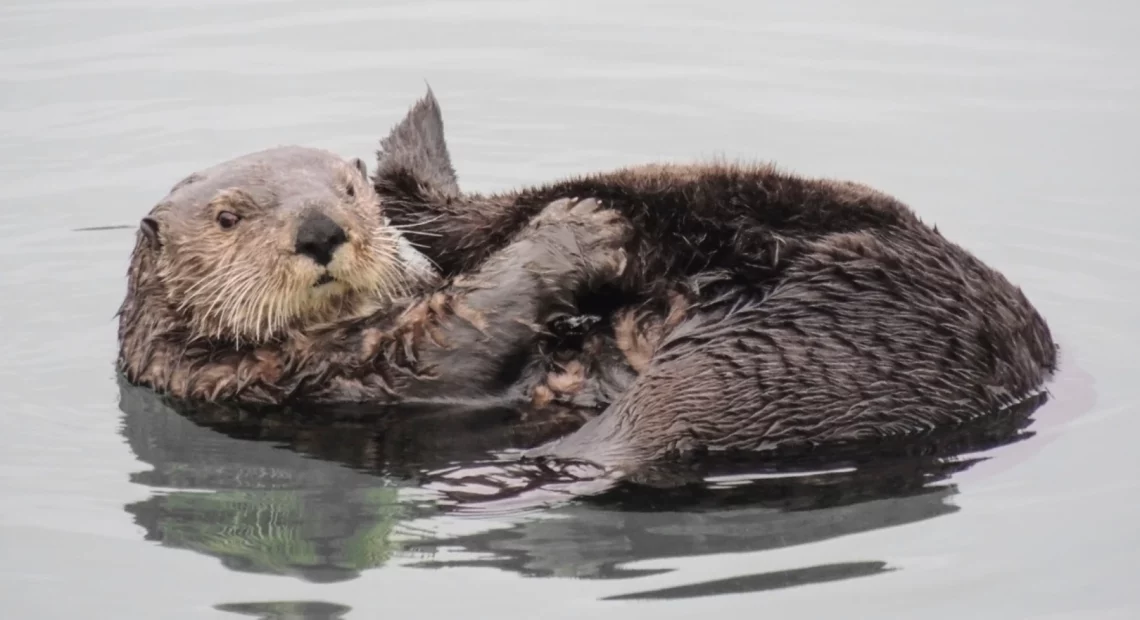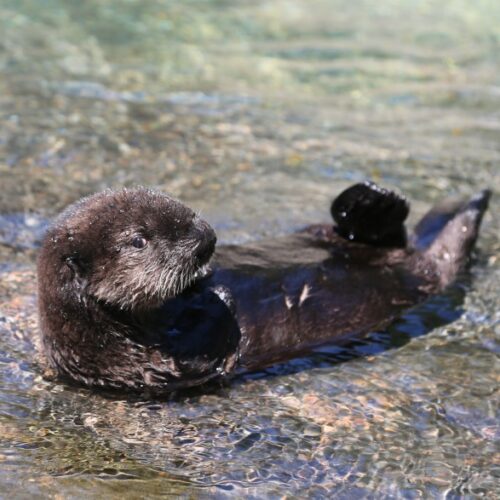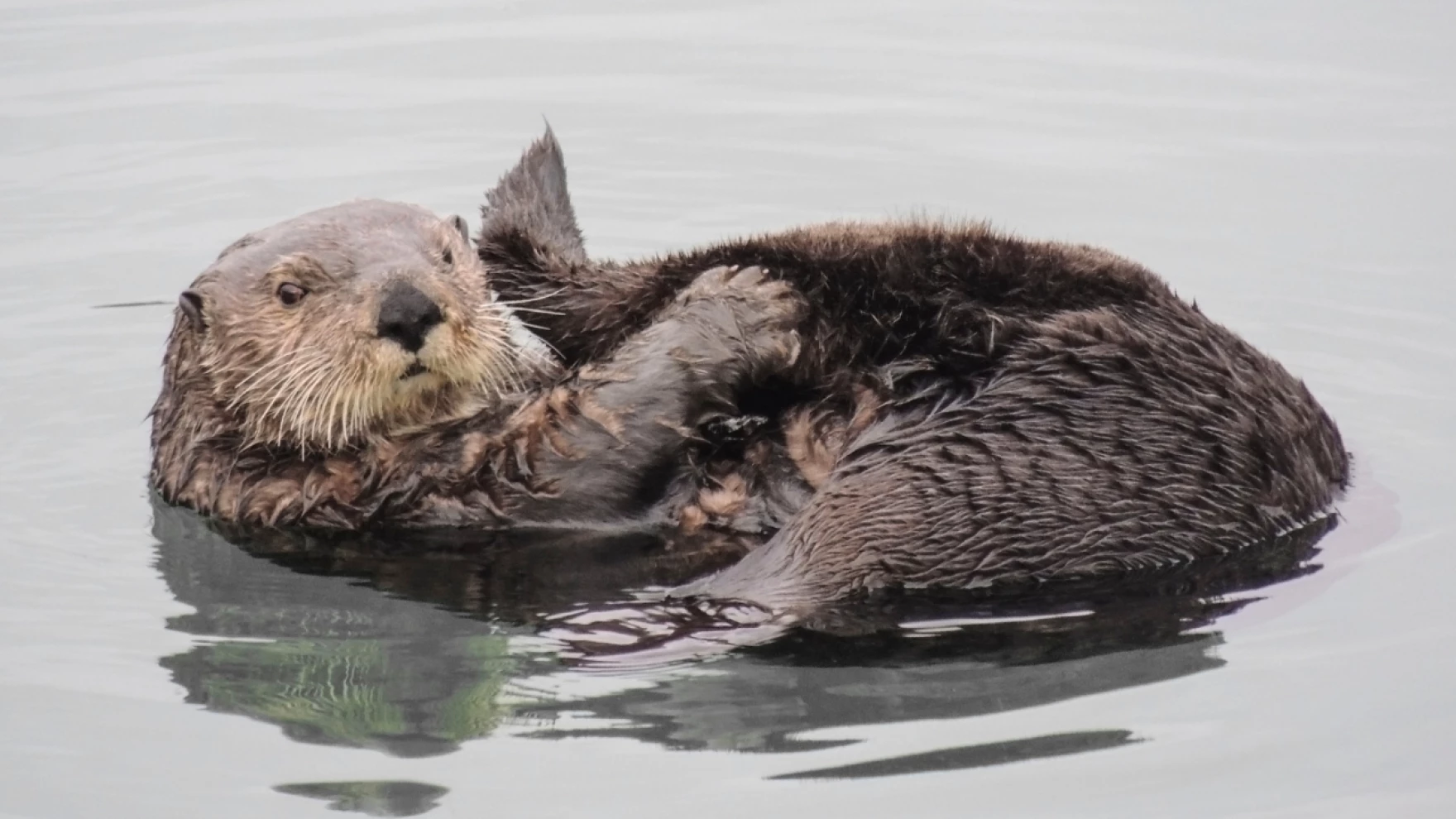
Some Otterly Pleased By New Report On Bringing Sea Otters Back To Oregon Coast, Others Paws Down
Read
A federal study ordered by Congress concluded it would be feasible to reintroduce sea otters to the Oregon and northern California coasts. However, that finding doesn’t mean the super-cute predators will be relocated into their former ocean habitat anytime soon.
Sea otters were hunted to local extinction along the Pacific Northwest coast as part of the fur trade in the 18th and 19th centuries. The critters were successfully reintroduced to Washington, British Columbia and southeast Alaska fifty years ago. It didn’t go so well along the southern Oregon Coast, where the otters released during the same time period mysteriously vanished after a few years.
Now, a key federal agency has wrapped up a detailed look at whether it is worth trying again in Oregon. The bottom line according to the U.S. Fish and Wildlife Service is, yes.
“There would be multiple substantial biological and ecological benefits to the nearshore marine ecosystem from a reintroduction of sea otters to their historical range in northern California and Oregon,” the executive summary of the newly-released feasibility and cost assessment stated.
Michele Zwartjes, USFWS Oregon Coast field supervisor and one of the study co-authors, cautioned that her agency is years away from any decision to carry out a reintroduction plan.
“There’s no recommendation as to whether or not reintroduction should actually occur,” Zwartjes said in an interview. “We are in the very earliest stages of even considering the possibility of reintroduction.”
Zwartjes explained that restoring this keystone species could launch a cascade of positive, indirect effects. Hungry otters would reduce an overpopulation of sea urchins, which in turn could result in healthier kelp forests. More widespread kelp in turn could store carbon and nurse increased fish populations. The presence of sea otters could also spur increased tourism.
However, the federal agency acknowledged there is also risk to shellfish fisheries due to predation by sea otters on crabs, clams and sea urchins. The otters have big appetites because they need to eat heartily to stay warm in the cold Pacific waters.
Therefore, the federal report recommended as a next step that an experienced, neutral facilitator convene stakeholders, agency representatives and scientific experts to hash out reintroduction options “that might present an acceptable level of risk to all parties.”
Zwartjes said additional studies are also needed, including a robust social and economic impact analysis. The Elakha Alliance, an Oregon nonprofit that supports reintroduction of sea otters, is already working on its own version of that with a view toward addressing the grave concerns within the fishing industry about competition from voracious otters.
“For our part in Oregon, we’ve hired a community liaison person to work with the communities on the southern Oregon coast, where the best habitat is located,” said Bob Bailey, the board president of the Elakha Alliance.
“Elakha” is the Clatsop-Chinookan word for sea otter. The conservation group previously commissioned its own feasibility study, which reached similar conclusions to the federal one released last week.
“Restoring a population of sea otters is doable,” Bailey said. “It’s likely to succeed and it’s likely to bring major benefits to the ocean ecosystem and local coastal economy.”
People in the fishing and seafood industry remain dubious about that. The West Coast Seafood Processors Association fired off a preemptive critique of the U.S. Fish and Wildlife study in June and the trade group’s executive director, Lori Steele, said via email Thursday that all of their concerns were still valid.
“There is no doubt reintroducing sea otters will have significant impacts on fisheries, ports, and other industries,” California Sea Urchin Commission chairman Dave Rudie said in a statement. “We’ve seen it happen already in California. Look at what happened to Pismo clams in Pismo Beach and the loss of the abalone fishery in Morro Bay and Monterey in the 1960s and 1970s.”
Coastal tribes are weighing in, too. When consulted by the Fish and Wildlife Service, tribes within the area under consideration for sea otter reintroduction in California and Oregon were generally supportive, with the Confederated Tribes of Siletz Indians voicing particularly enthusiastic assent.
“We vigorously support restoration of sea otters to our coast, and the bolstered resilience of our nearshore ecosystem diversity that would result from it,” wrote Siletz Tribal Chairman Delores Pigsley in a letter. “We have been without that relative here to help take care of us for too long.”
The Quinault Indian Nation in neighboring Washington took exception though and said in a separate letter that it does not support further sea otter reintroductions, even at a distance to the south. Quinault Nation President Guy Capoeman wrote that he was concerned that sea otters, once established off the Oregon coast, would expand their range north and threaten the viability of razor clam and Dungeness crab populations that tribal fishermen depend upon.
The confluence of biological and human variables led Zwartjes and Bailey to independently describe a working concept for a limited, targeted reintroduction in a few strategic locations along the coast, if the plans move forward.
“That would potentially result in a few hundred sea otters over the coming decades, not thousands of sea otters,” Zwartjes said. “So, we believe those impacts would be relatively localized.”
Individual Washington sea otters occasionally stray south into Oregon waters, but haven’t stuck around long-term. Washington state is home to about 2,300 sea otters along the outer coast and western Strait of Juan de Fuca. Expansion of the central California population northward has been blocked by a “shark alley” around Half Moon Bay. The USFWS report said shark bites are a leading cause of mortality for the threatened California sea otters.
Zwartjes said there was “virtually no chance” of colonization of the vacant otter territory along the northern California and Oregon coasts through natural range expansion within the next ten years.
Related Stories:

Skeptics Of Sea Otter Reintroduction Getting Organized On Pacific Coast
Sea otters are undeniably cute, but cuteness only goes so far when major economic interests are at stake. That’s an inference you can make from the emergence of organized pushback to the possible reintroduction of sea otters along the Oregon Coast. Continue Reading Skeptics Of Sea Otter Reintroduction Getting Organized On Pacific Coast

Sea Otter Reintroduction For More Of The Pacific Coast Gets A Nudge From Congress
Bringing back sea otters to the Oregon Coast just got a high-level endorsement. The federal budget for this new year, which President Trump signed after some unrelated last minute drama, includes a directive to study sea otter reintroduction. Continue Reading Sea Otter Reintroduction For More Of The Pacific Coast Gets A Nudge From Congress

Does Cuteness Count? A Cost-Benefit Analysis Encourages Backers Of A Northwest Sea Otter Return
A study of sea otter restoration in British Columbia is giving encouragement to a group that wants to bring sea otters back to the Oregon Coast. The research team led by the University of British Columbia analyzed the rebound in sea otters off the coast of Vancouver Island. Continue Reading Does Cuteness Count? A Cost-Benefit Analysis Encourages Backers Of A Northwest Sea Otter Return
















